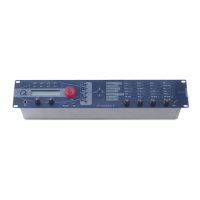MIDI Control – Channel Based MIDI Messages
Waldorf microQ User´s Manual 138
MIDI Control
This chapter describes the MIDI functions of the Waldorf microQ.
Channel Based MIDI Messages
In Single Mode, the microQ receives and sends (microQ keyboard) channel based MIDI messages like
Notes, Aftertouch, Pitchbend and Controllers on the selected Global MIDI Channel. If it is set to
omni, the microQ sends channel based MIDI messages on channel 1 but receives them on any
channel. All received channel based MIDI messages are played back by the active Instrument or
Layer.
In Multi Mode, the microQ can send and receive on all 16 MIDI Channels at once, depending on the
Instrument settings of the current Multi program.
Program Change Messages
MicroQ Sound and Multi programs can be selected by MIDI Program Change messages together with
MIDI Bank Select messages. As the microQ contains 100 programs in each bank, it recognizes the
program numbers 1…100 (on zero-based MIDI senders, this means 0…99). The Bank Select LSB
message (Controller #32) is used to switch between different banks:
• Bank 0 contains Sound Programs A001…A100.
• Bank 1 contains Sound Programs B001…B100.
• Bank 2 contains Sound Programs C001…C100.
• Bank 3 contains Drum Maps D01...20
In Multimode, the microQ changes the Sound on individual Instruments.
Please take into consideration that only 20 Drum Maps are available. Program Changes with
higher values than 20 will be ignored.
Note On and Note Off Messages
The microQ receives Note On and Note Off Messages in the entire MIDI Note Number range with
Velocity and Release Velocity. The microQ keyboard also sends Note On and Note Off Messages.
Note On with Velocity 0 (simple note off) is evaluated as Note Off with Release Velocity 64.
Aftertouch Messages
The microQ receives monophonic Aftertouch messages. The microQ evaluates incoming Aftertouch
messages as “Pressure” modulation source. The microQ keyboard also sends Aftertouch messages.
Poly Pressure Messages
The microQ receives Poly Pressure Messages but can’t send them. Poly Pressure Messages are
evaluated as “Poly Prs.” modulation source.
Pitchbend Messages
The microQ receives Pitchbend Messages with a resolution of 14 bits. Pitchbend ranges are
controlled by the BendRg parameters in the Oscillator Edit menu. Pitchbend Messages can also be
used as “Pitchbend” modulation source. The microQ keyboard also sends Pitchbend Messages.

